A Mystery in a Scottish Lodge
The other week I was in Perth, Scotland for the Annual Convocation of the Societas Rosicruciana in Scotia. While I enjoyed several days of sightseeing in the region, the one omission was of course Scone. There was little point visiting it, even if it is virtually a suburb of Perth, since the Stone of Destiny is currently in England waiting to be used at King Charles III’s coronation in May.
Nevertheless, the venue for the Convocation was the Scoon and Perth Lodge No. 3, and although the building is relatively new by British standards, its legendary history proved too interesting not to record here. However, the most intriguing part concerned the murals and pictures around the Lodge Room, which make for quite a recondite mystery, as you will see.
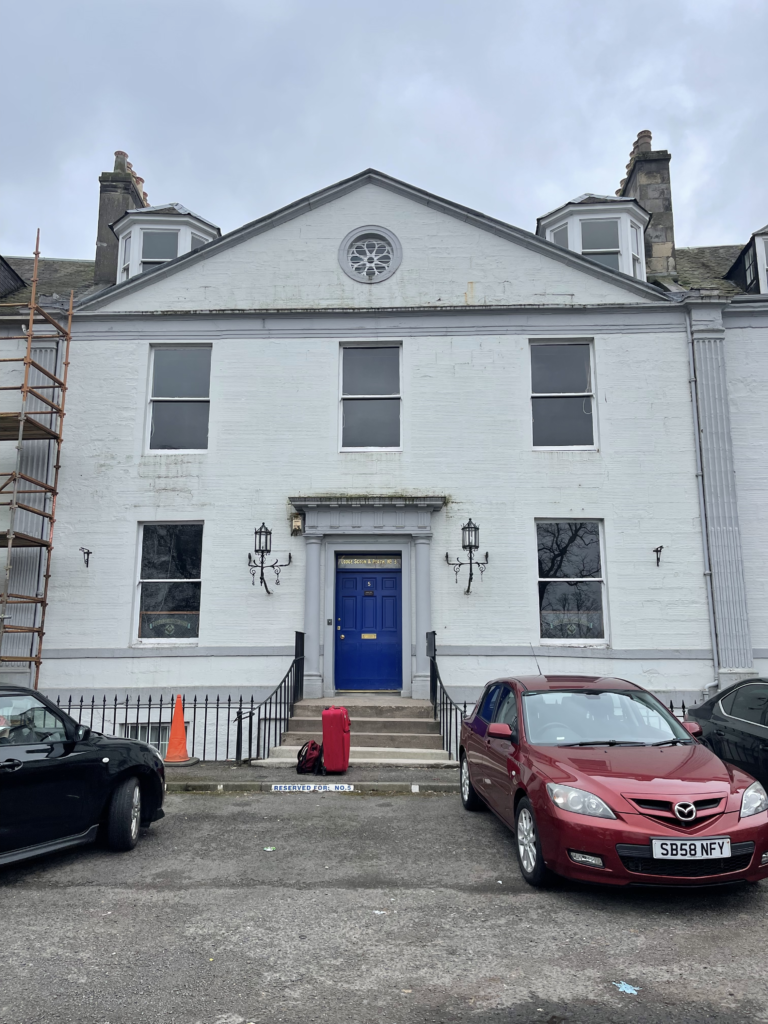
The origins of the Lodge are, like most Scottish masonic histories, lost in time. However, reference to it is claimed in The Mutual Agreement dating from December 1658, which indicates that it existed before this time. Indeed, their claim is that it existed as an operative Lodge from 1193 (source: lodgescoonandperthno3.org.uk) ! It also makes the interesting claim that it was the Lodge petitioned by King James VI of Scotland (Later the First of England and instigator of the King James Bible) to enter Freemasonry at the age of 34: “King James VI, by his own desire was entered ffireman, measone, and Fellow of Craft of the Lodge….during all his lifetime he mantayned the same as ane member of the Lodge of Scoon, so that this Lodge is the most famous Lodge (iff well ordered) within the Kingdome.” This in an interesting claim, since it would fit well with the fact that his grandson, James II, after being expelled from the English throne for being a Roman Catholic, settled in France and issued Masonic Charters on the strength of his claim to be Grand Master of Masons. Whether we believe either or both of these hotly-debated claims, there is a most interesting picture of King James VI’s initiation hanging in the Lodge Room.
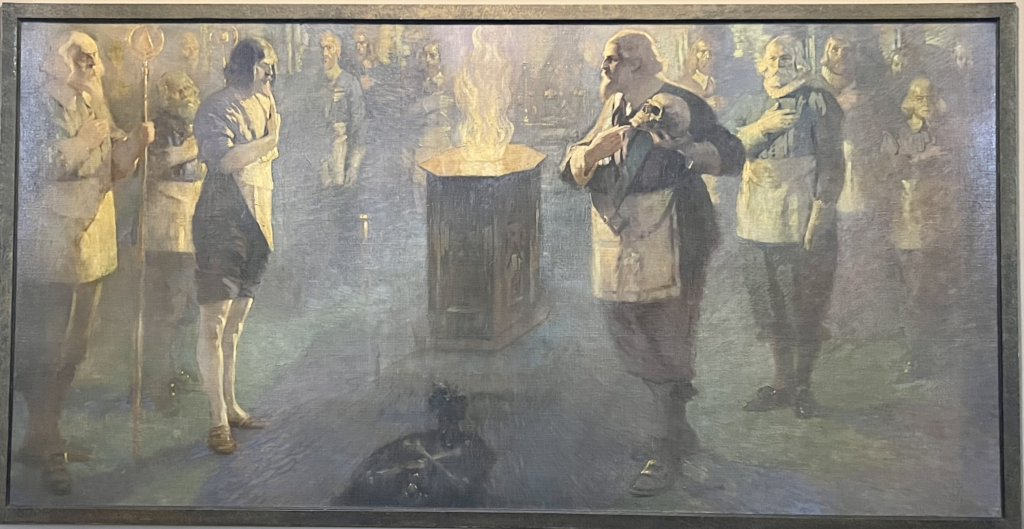
But the main story I want to cover is that of a mystery associated with the Lodge.
I love stories which involve the appearance, and equally mysterious disappearance, of a person in a story. Perhaps one of the most famous in the United States is that of the mysterious spiral staircase in Loretto Chapel in Sant Fe, NM. The legend goes that the nuns of that Chapel prayed for a miracle, since they had to use a regular ladder to gain access to the organ loft. One evening an old man knocked at their door and said he would build a staircase for them if they provided the materials, which they did. He then locked himself in the chapel, and they could head banging and sawing going on at all hours. One day all was silent, and they finally opened the door and went in. Before them was a magnificent spiral staircase leading from the floor to the loft. As well as being exquisitely beautiful, no nail had been used in its construction. The entire structure was held together by gravity alone. Of the man there was no sign. Of course, the nuns drew the conclusion that their mysterious vanishing visitor had been none other than the patron of all carpenters – St. Joseph!
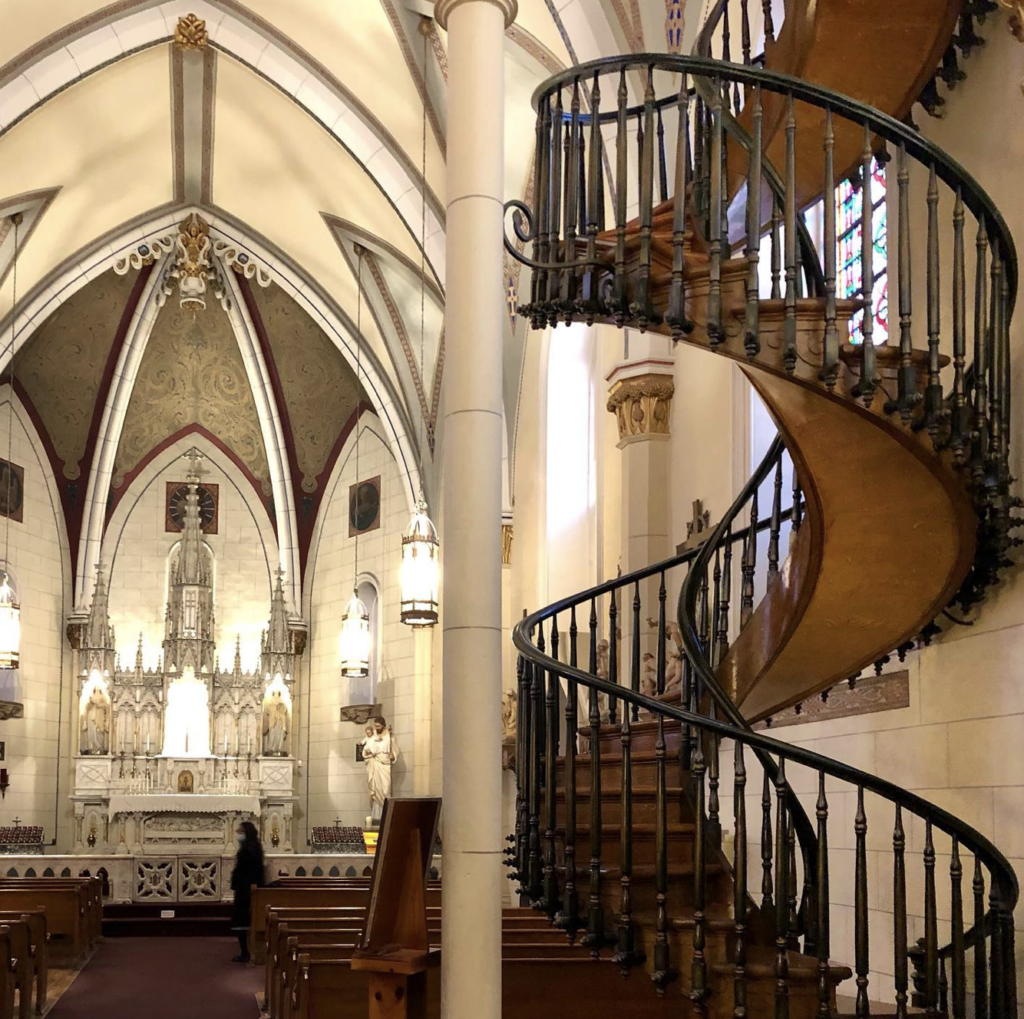
The story of Scoon and Perth Lodge No. 3 follows this familiar pattern. One day in the early 1920s, a man called T.H. Peddle, who sought admission. He was initiated Entered Apprentice and revealed he was an artist and would like to adorn the walls of the Lodge Room with murals. This he did, and to the astonishment of the Brethren showed an understanding of Masonic symbolism which not only went far beyond what might possibly be expected in a brand-new member, but far surpassed that of most of the more experienced Brothers. In due time he completed a series of friezes around the tops of the walls, and several other paintings, culminating in an exquisite mural on the Eastern wall, and another at the top of the staircase. A couple of years after becoming a Master Mason, one day he simply didn’t show up for a regular meeting and was never seen again.
Who was this mysterious stranger and Brother? Nobody knows, and further research has revealed next to nothing about either his life previous or subsequent to his mysterious arrival at Scoon and Perth Lodge No. 3.
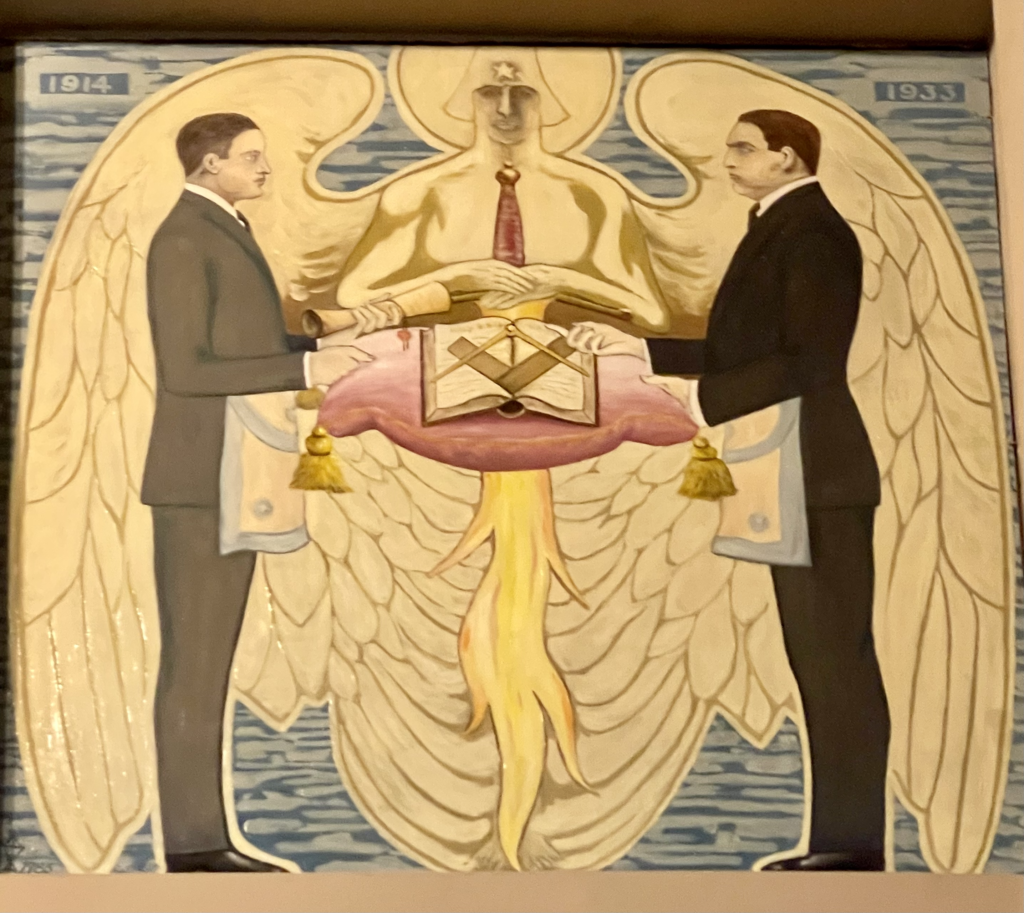
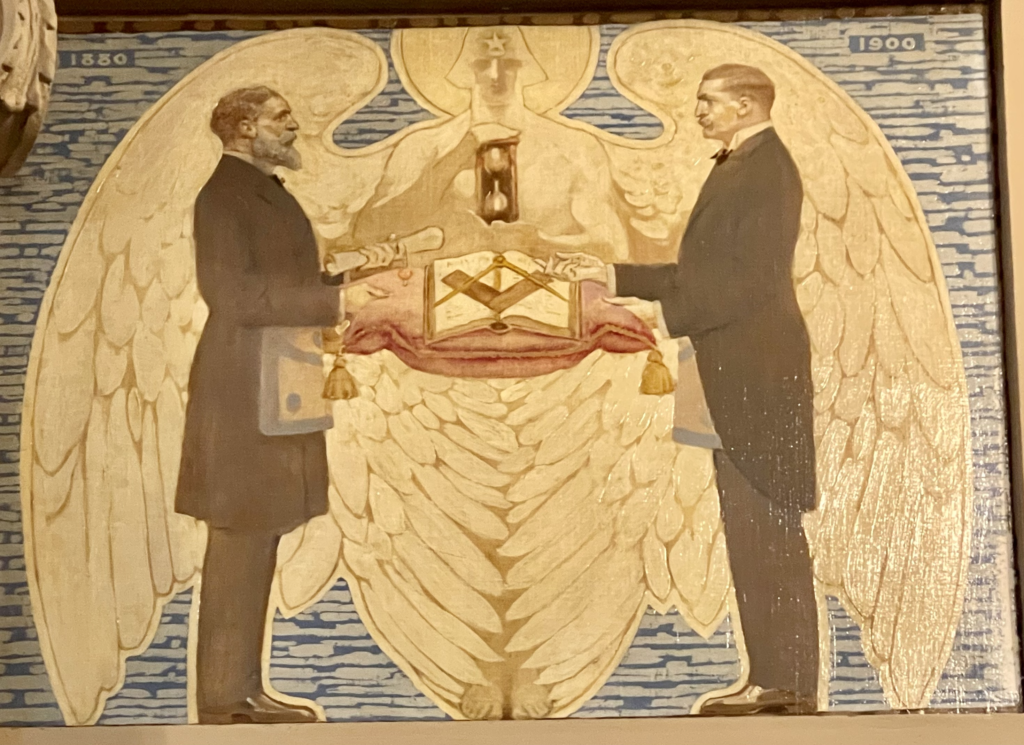
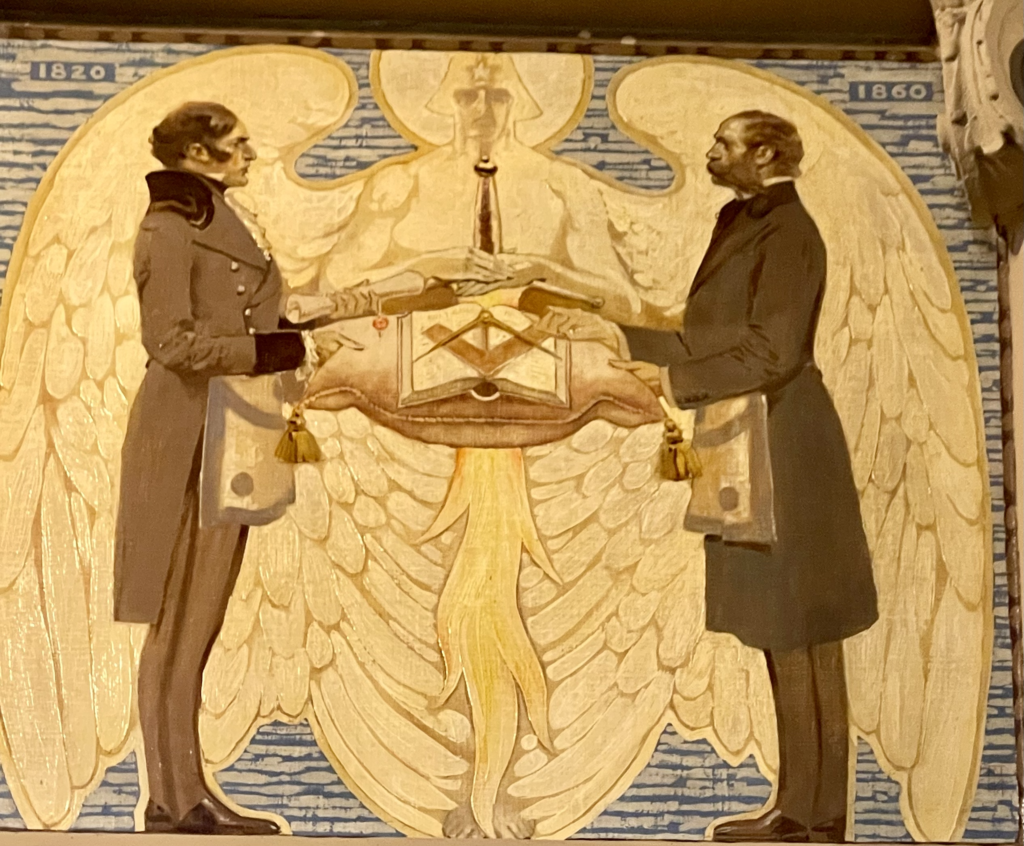

I have included a number of images featuring this extraordinary artist’s work. On the North side is a series of friezes depicting Masons through the ages, handing on their secrets from one generation to the next. On the South side is the story of Hiram Abif, including his assassination and burial.
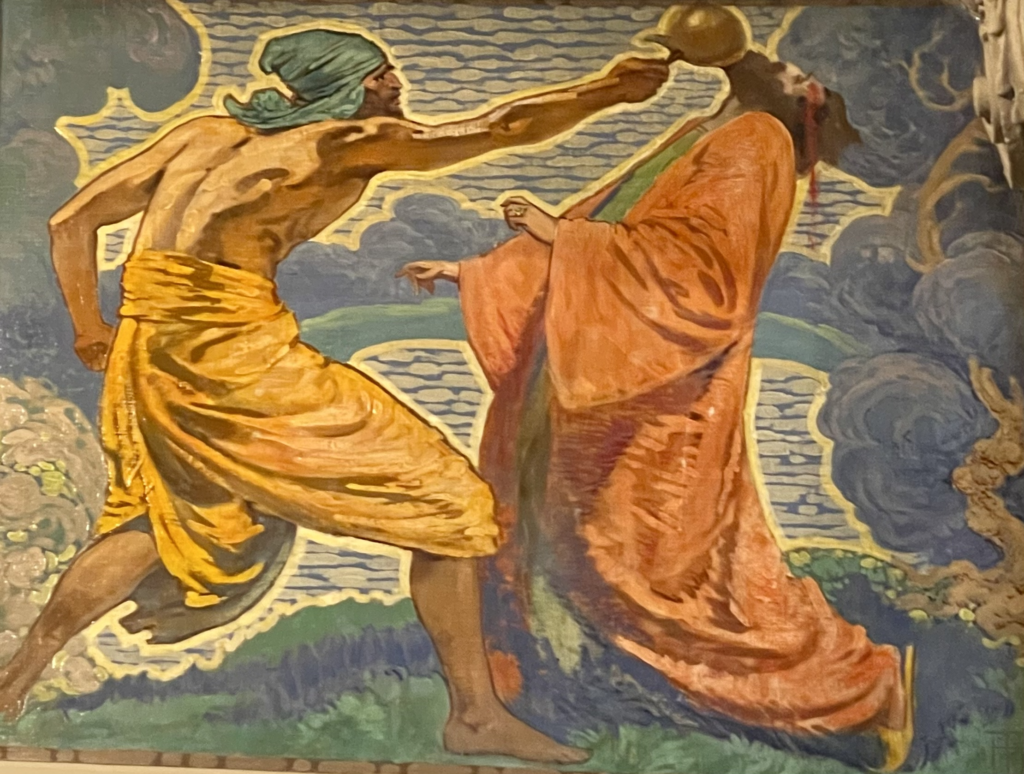
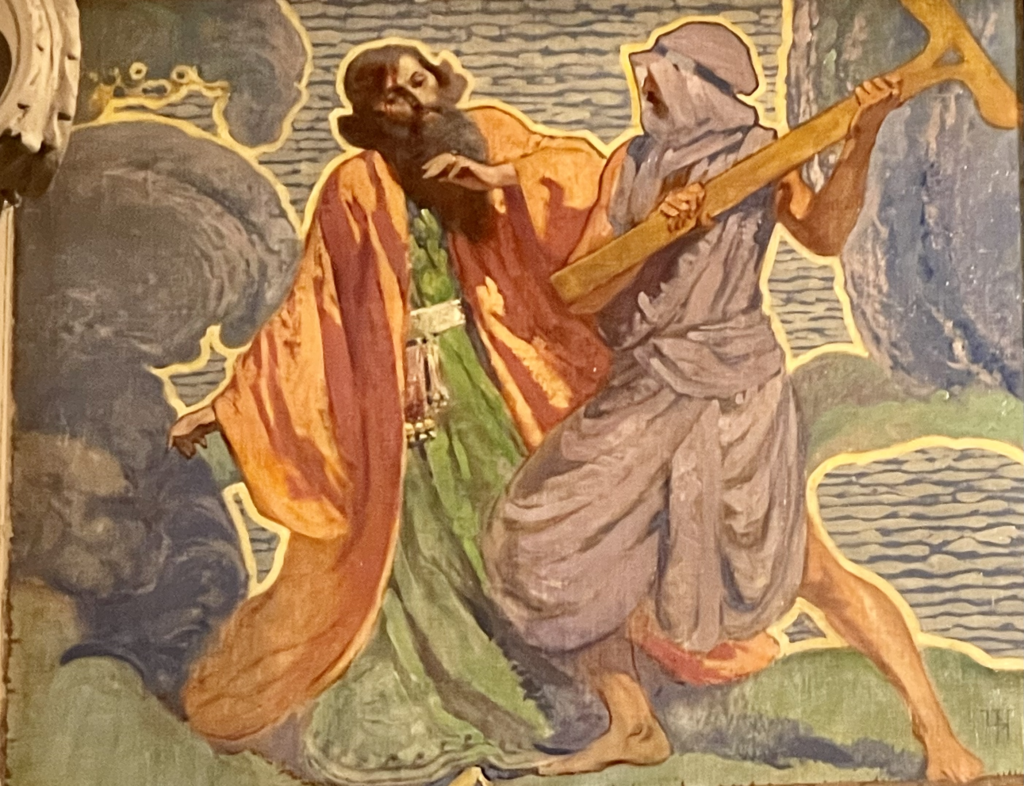
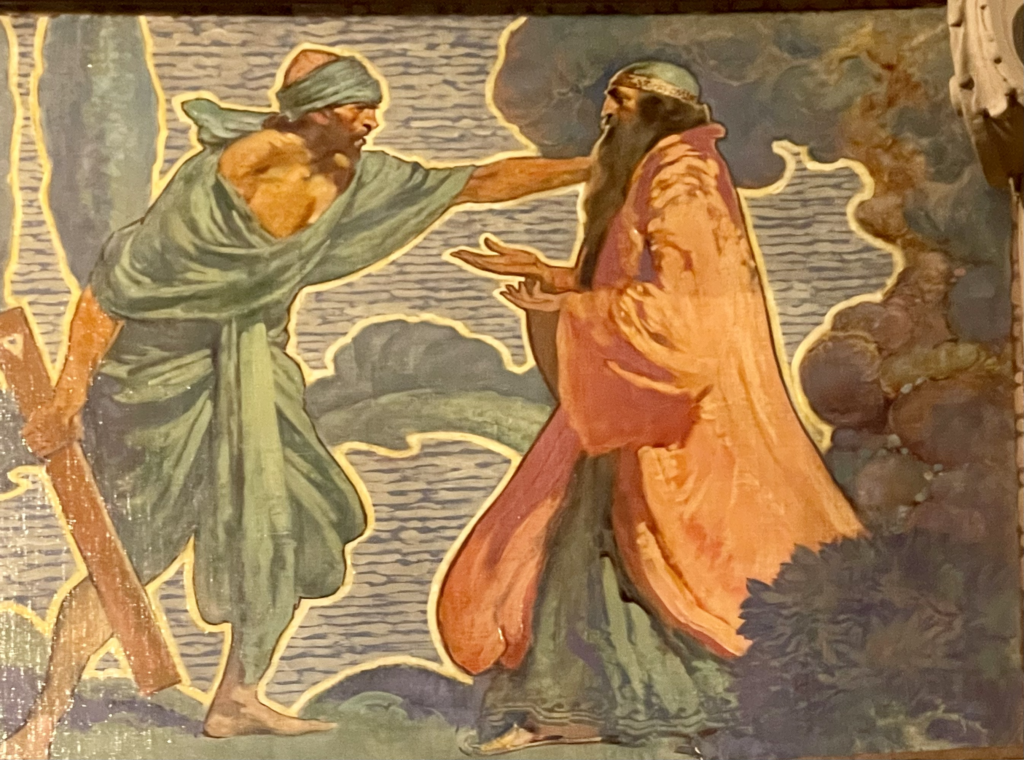
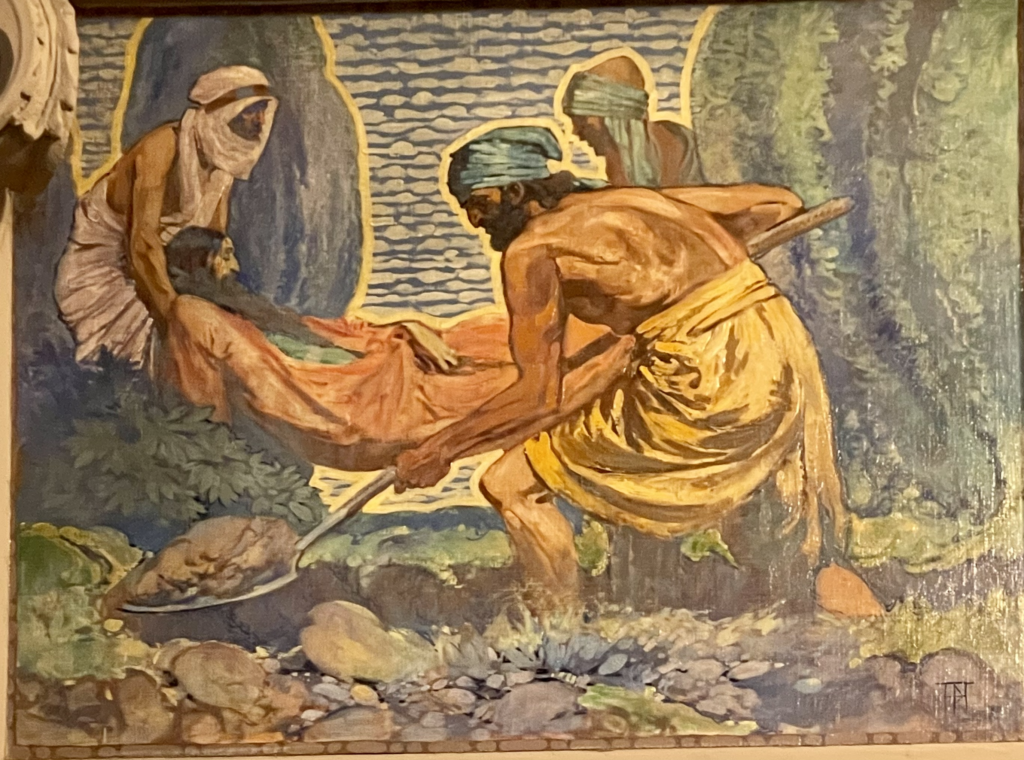
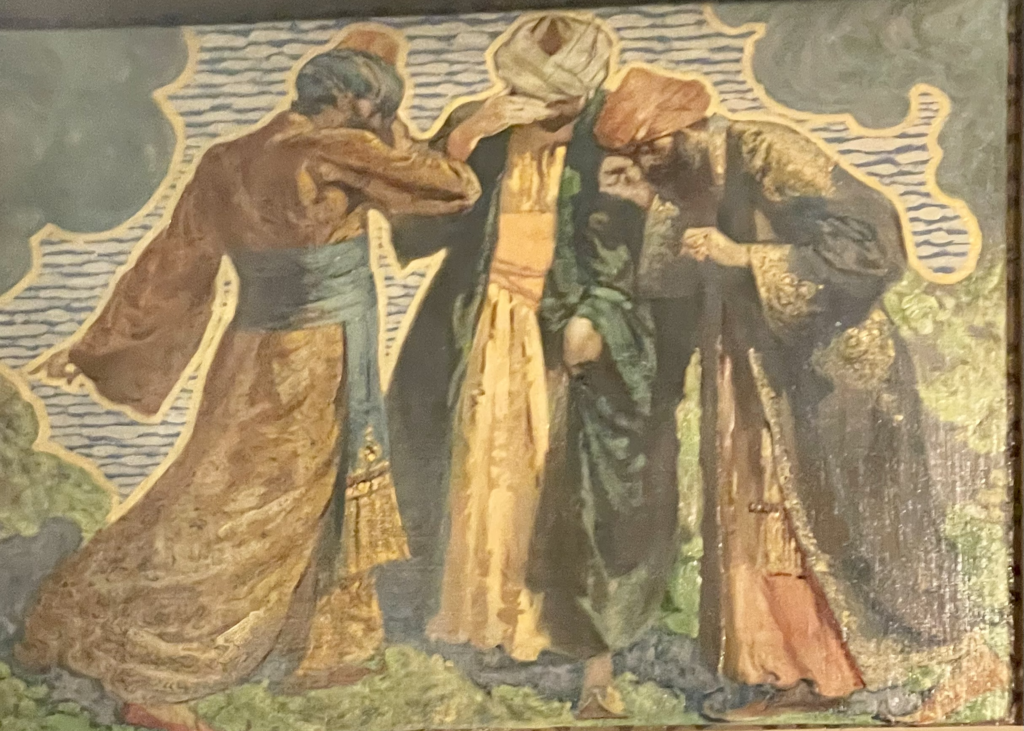
However, there are two images in particular I want to focus on, and which I think might give a hint about the artist: if not to his true identify, at least to a possible influence which drove him to paint what he did.
The first clue is in the last image in the frieze about Hiram Abif. The final picture doesn’t depict the reburial of what our ritual indicates was by then a putrefying corpse. Instead, it shows Hiram resurrected and surrounded by a halo of glory! Now, to my knowledge, there is only one ritual which refers to this extraordinary development: the Scottish Master Degree of the Rectified Rite of Jean-Baptiste Willermoz. In this ritual, considered a ‘pivot’ Degree between the Old and New Testaments, Hiram is depicted on a tracing board as a type of Christ, rising from his tomb and regarding the East, while in the distance one can make out the outline of the Celestial City.
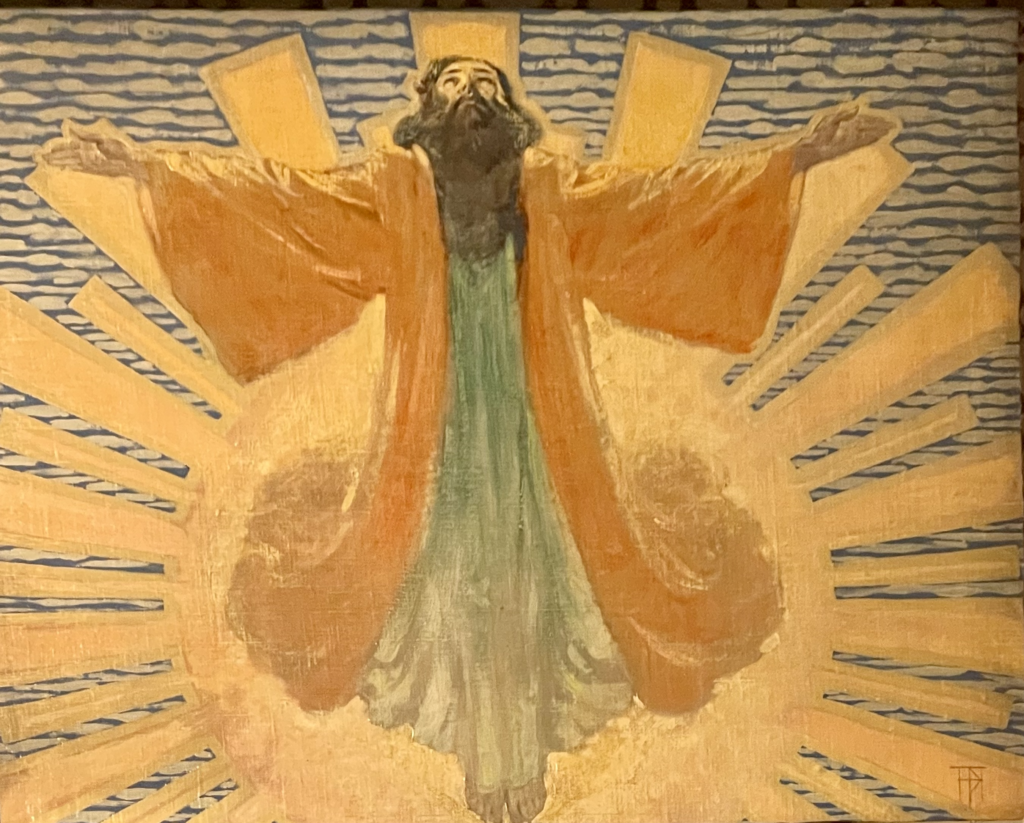
The second clue lies in the image behind the Worshipful Master in the East. This powerful picture features four very ‘art deco’ goddesses representing the four elements, Fire and Water to the left, and Earth and Air to the right. In the center we see the crest of a hill, upon which a naked man, kneeling, faces the East with his arms outstretched, while before him is the ethereal image of a hexagram surrounded by a circle, and in the center of which is the All-Seeing Eye.
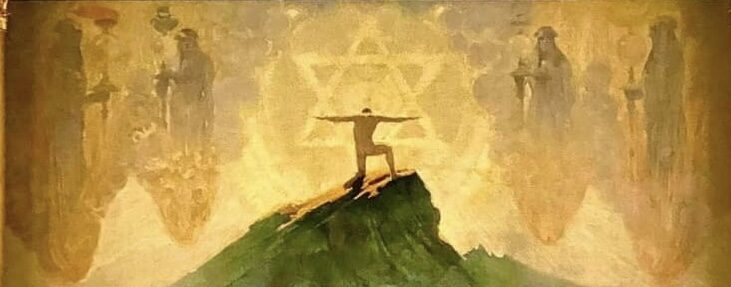
This image could be the complement of the final picture of Hiram resurrected, since the man is now facing East and contemplating his source, and the source of all creation (the hexagram, as well as being the Seal of Solomon, is also often said to represent the planets, or in the Rectified Regime the days of creation emanating from the Principal Source of all things). Indeed, the hexagram surrounded by the circle perfectly reflects the jewel of the Scottish Master Degree in the Rectified Rite. While this jewel contains an ‘H’ in its center, representing – among other things – Hiram, here we see the head of the man in the center of the Hexagram, suggesting the same symbolism.
Further, this symbol is also the Universal Pantacle of Martinism, a mystical Christian Order arising from the work of Martines de Pasqually, Willermoz and Louis-Claude de Saint-Martin. This Order adopted the jewel created by Willermoz with the addition of a cross in the center, representing Man in his original glory (before the Fall) in the center, and later the One sent to replace him and restore universal equilibrium after his Fall. And here we have man in his original, naked, state, with his arms outstretched in the form of a cross…
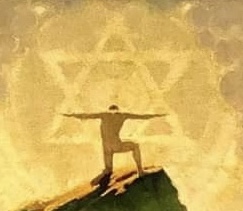
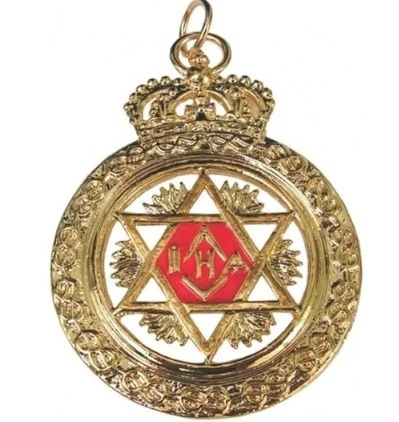
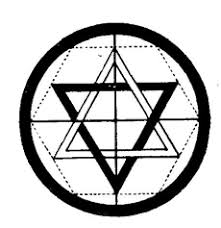
My theory, then, is that T. H. Peddle, or whatever his real name was, indeed came to the Lodge with a profound background of knowledge of the teachings of Martinism or Martinezism. Then why did he ‘join’ Masonry in Scotland? I believe he was attempting to ‘complete the circle.’ Ramsay’s Discourse located the origins of Freemasonry in Scotland; and it was James VI’s descendant, James VII of Scotland and II of England, who moved to France and there issued a Charter to the father of Martines de Pasqually, which eventually resulted in the Scottish Rectified Rite of Willermoz and the teachings of Saint-Martin. What greater an act of love could there be, whether by impulse or design, than to bring the fruits of this lineage back to their source in the very Lodge where, some three hundred years earlier, the great circle had begun with the imputed initiation of King James VI?
Well, at least that’s my romantic take on this wonderful story of mystery, intrigue and disappearance!
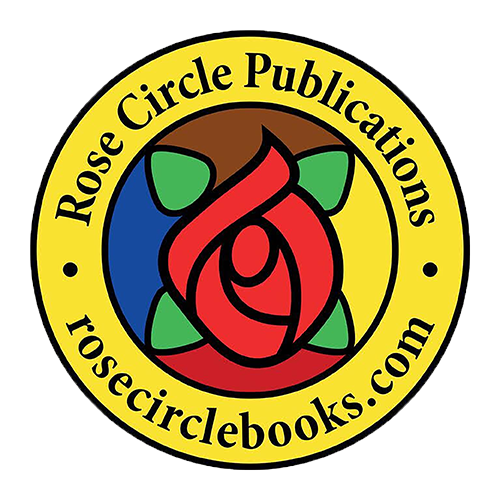
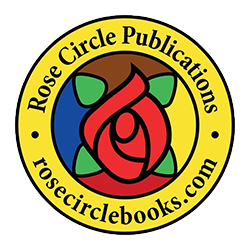
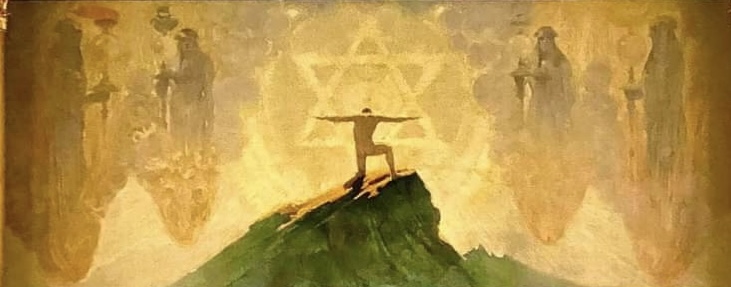
Very interesting. I am convinced that King James VI was a Mason. A study of the frontispiece of the 1611 KJV Bible. Indicates to me,at least, he was Well worth investigating.
very interesting-i am a mark master mason in lodge 78 dundee, have been a mason for just over a year and love it.–in sept/oct i will join the royal arch and later the knights templar.–i would recommend the masons to anyone.